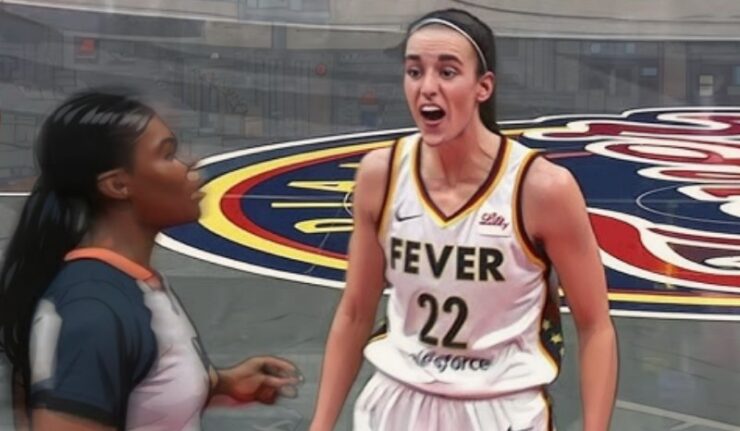The internet has taught us that humanity has a boundless capacity for irrational hatred. We hate pineapple on pizza, the final season of Game of Thrones, and people who clap when the plane lands.
But the venom reserved for the WNBA seems to occupy a special tier of rage, a level of fury typically reserved for a cable company outage during the Super Bowl. With the league’s popularity surging thanks to a new generation of stars, the volume has been turned up on both the praise and the bafflingly intense criticism.
The hate isn’t really about basketball. It’s a symptom of a few modern cultural sicknesses: the normalization of “hating” as a pastime, the fragility of a male-dominated sphere feeling its walls shake, and a fundamental misunderstanding of what sports are supposed to be.
The Unwinnable Game of Comparisons
Let’s start with the most common, and laziest, critiques lobbed from the cheap seats of social media. “They’re not as athletic as the men.” “They don’t even dunk!” “My local high school boys’ team could beat them.”
These aren’t arguments; they’re confessions of a catastrophic lack of imagination. Complaining that WNBA players don’t play like NBA players is like listening to a brilliant jazz quartet and whining that they don’t shred like Metallica. It’s the same art form, but a different and equally valid expression of it. One emphasizes thunderous, above-the-rim power, while the other thrives on fundamentals, precision, teamwork, and a different kind of physical chess. To suggest one is illegitimate because it isn’t the other is just plain silly.
Nobody watches a welterweight boxing match and screams that the fighters are worthless because they couldn’t beat Tyson Fury. We understand that different physical realities create different styles of competition. Yet, for some reason, when it comes to basketball, a bizarrely large number of men, many of whom likely consider a brisk walk to the refrigerator a full workout, appoint themselves as the guardians of the sacred orange orb, declaring that only the version played by genetic freaks over 6’8″ is valid. The obsession with comparing the two leagues is a bad-faith argument from the start, designed to ensure the WNBA can never win.
Hating Is the New National Pastime
We live in the era of the professional hater. It’s a legitimate hobby now. Our social media algorithms reward outrage, and dunking on something popular (or growing in popularity) is the lowest-effort way to get a dopamine hit of likes and retweets. The WNBA is a perfect target for this sport-within-a-sport.
Hating the league has become a bizarre personality trait for a subset of online sports fans. It’s a pre-packaged set of opinions that requires zero actual knowledge. You don’t have to watch a game to know the script: just mention subsidies from the NBA (a common and often necessary practice for growing leagues), mock a player’s physical appearance, and post a clip of a missed layup. It’s a tired, unoriginal routine, but it gets the desired reaction.
This isn’t about legitimate sports critique. It’s about performance. It’s the same impulse that drives people to leave one-star reviews for a restaurant they’ve never been to. The WNBA and its players are just another target in the Hate-for-Sport Olympics, an event where the goal is to be as loud and dismissive as possible from the comfort of your own couch.
The Perceived Threat to the Boys’ Club
Now we get to the heart of the matter. For over a century, the world of professional sports has been one of society’s most impenetrable boys’ clubs. It’s a massive cultural and financial empire built by men, for men, and starring men. It’s a space where male competition is lionized and male bonding is paramount. And the WNBA, simply by existing and more importantly, by succeeding, is seen as a threat.
It’s not a conscious thought for most, but it’s a palpable undercurrent. The fear is that sports are a zero-sum game. If the WNBA gets a primetime slot on ESPN, that’s one less slot for a men’s sport. If an athlete like Caitlin Clark gets a massive shoe deal, that’s money and attention that could have gone to a male athlete. This thinking is, of course, a fallacy. A rising tide of sports fandom lifts all boats. More people watching basketball, regardless of who is playing, is good for the entire ecosystem.
But the fear is less about economics and more about cultural territory. The growth of the WNBA challenges the idea of the sports world as an exclusive male treehouse. Suddenly, the conversations, the stars, and the business decisions aren’t solely centered on men. The league is lifting up female athletes, giving encouragement to young girls. For those whose identity is deeply wrapped up in the male-centric nature of sports, this feels less like progress and more like an invasion. The irrational anger is a defense mechanism from a corner of the culture that feels its dominance is, for the first time, no longer absolute.
The noise from the haters is just that: noise. The WNBA is growing, ratings are soaring, and a new generation of fans is showing up, completely unconcerned with the tired complaints of the past. Teams are sinking millions into new arenas. The people who hate the WNBA aren’t really critiquing a sport; they’re just telling on themselves. And while they’re busy yelling at the clouds, the game goes on without them.




